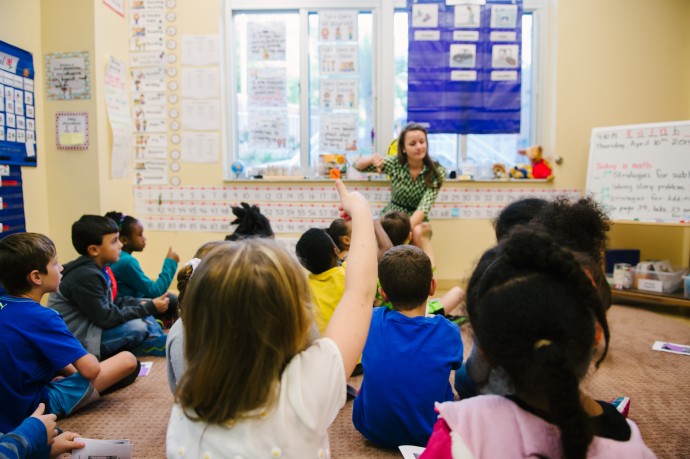The final domain of identity safety is caring classroom environments, where social skills are taught and practiced to help students care for one another in the context of an emotionally and physically safe classroom. This post about caring classroom environments is the final entry in our series, because the classroom and school environment is where all aspects of identity safety play out.
Components of Caring Classroom Environments
Teacher skill is the capacity to establish an orderly, purposeful classroom that facilitates student learning. All the components of identity safety will not be effective without the use of effective teaching strategies and a well-managed classroom. A chaotic environment is unsafe because students do not know what to expect. Inconsistent discipline strategies feel unfair. Teacher skill includes well-planned lessons that promote student engagement, procedures for classroom routines, and smooth transitions.
Emotional and physical comfort is crucial, so that each student feels safe and attached to school and to other students. It can only happen in an environment of safety. It does not happen when students feel afraid. I still remember cringing as a first-grader walking down the enormous school hallway when I heard the assistant principal yelling down at another child, If you ever use that bad language again, I will wash your mouth out with soap!
I cowered; although I myself had never used bad language, just hearing that terrified me.
Emotional and physical comfort can be achieved in many ways. Teachers can set up the classroom to enable each child to have his or her own personal space, allowing them to keep their work with them and to keep their desk neat. The walls can reflect the students’ lives and backgrounds, with pictures of people that look like them. All students can see their classwork posted on the wall, not just top achievers.
Teachers can show students that they value fairness and explicitly explain how they do that. One teacher had a slogan on the wall: “Equal, but Different.” She created activities to get that message across, including having the students do an activity called “Draw a Monster.” She told the students not to look at each other’s papers as she gave very specific instructions: “Draw a round head with two pointy ears, a long nose”¦” When the students finished they looked at each other’s papers and laughed as they saw how different each one was, proving the teacher’s point.
Another teacher taught students about the different learning modalities. She let them know that we each have modalities where we do well and others we continue to develop. The students considered their own strengths and made rainbows with their different learning modalities highlighted in different colors. Each rainbow was in beautiful colors, but each one was different.
Attention to prosocial development incorporates social and emotional learning (SEL) into all aspects of daily life, teaching students how to live with one another, feel empathy for one another, and solve problems with respect and caring for others. However, attention to prosocial development goes beyond teaching social and emotional skills. It means creating a classroom environment that continuously addresses students’ prosocial learning and needs in the context of developmentally appropriate teaching.
As we mentioned earlier, cooperative learning does not only happen during group time, nor does SEL skill development happen only during specific lessons. It happens all day long. One teacher began every day with a quick status check. She would call out, “Status of the class,” and everyone would raise their fingers to indicate how they felt, with ten fingers being great, and one being not very good. In a short moment, she could tell the general mood and determine who needed a bit of special TLC. When teaching students how to do the activity, she let them know their feelings mattered and would impact how they felt in school. And they knew she cared.

Attention to prosocial development is also woven into the curriculum. Literature, writing, and current events can all be linked to meaningful explorations of prosocial values, including empathy, perspective-taking, and treating one another kindly.
Class discussions can be places where students learn to listen to each other’s ideas and disagree respectfully. Class meetings and restorative circles are also places to both prevent and solve problems, where harm can be avoided and repaired through compassion and attentive listening.
Identity Safe Teaching Is Like Weaving a Tapestry
Putting the pieces of identity safety together is like creating a tapestry. Each of the components of identity safety can be seen as a thread; joined together, these threads create a holistic sense of identity safety for each child. As we have shown in this series, this process is at once simple, with many familiar strategies, and complex in the process of weaving all the strategies together. We have found that teachers often feel validated to find that many strategies they are already using work to help create identity safety. Weaving this tapestry by intentionally reflecting on practice may be harder than it seems, but it is definitely worth the effort.
